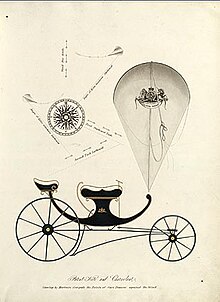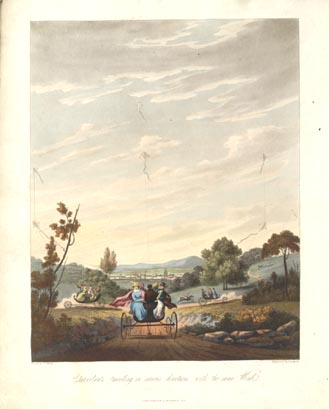It’s September once more, and time for a new report from Carriage and Driver with a preview of the upcoming decade’s hottest new vehicles. Whether you’re looking for a sporty performance model or a practical family vehicle, Carriage and Driver will tell you all you need to know!
First up, this 1816 model landaulette (as illustrated by R.
Ackermann—a name well known to Car and
Driver readers, I’m sure!), perfect for the smaller household with seating
for two and comfortably drawn by one horse. Quite smart!
When more seating is required, Car and Driver readers can’t do better than this Patent Landau
built and patented by Birch and Son of Great Queen-street in Lincoln’s-Inn-fields.
Mr. Birch “has obtained a patent for improvements in the construction of the
roofs and upper quarters, not only of landaus, but of all other carriages which
are made to fall down. By these improvements the objections against landaus
upon the old plan, either as town,
pleasure, or travelling
carriages, are entirely removed. The head or roof, and upper parts, by the new
invention, have an even smooth surface, like a well built town coach, shew no
outward joints on the top of the windows, or locks on the roof; yet are so
completely secured as to prevent any possibility of being opened from the
outside: it removes the inconveniences arising from the leather contracting, or
drawing the fore-lights out of their perpendicular position, it causing the
shutters and glasses to act properly, and renders it impossible for water to
penetrate the leather or to lie on the roof.” (Ackermann’s Repository, February 1809)
For anyone who admires barouches but requires more seating
than a barouche provides, perhaps this handsome caleche will answer. With enclosed
seating for four, you’ll be out of the weather and very much in style.
If your fancy runs to foreign vehicles, this droschki may be
the carriage for you. Its form is
particularly graceful and elegant, and models seating one or two are available.
The Emperor of Russia recently made a gift of one to his majesty King George
IV. (Ackermann's Repository, August 1820)
And speaking of Russia…with the approach of winter, our readers
might find this next model of interest. This Imperial Sledge, as seen in a
outing attended by a number of monarchs, nobility, and other great persons
during the recent congress in Vienna, makes getting around during the snowy
season both possible and pleasurable. With its phaeton form and elegant
decoration, you’ll drive like an emperor! (Ackermann’s Repository, April 1816)
What say you, Carriage
and Driver readers? Is there a model here you’d like to take out for a test
drive?



























 3. And if you're looking for an extra special gift for an extra special person, check this out:
3. And if you're looking for an extra special gift for an extra special person, check this out:



